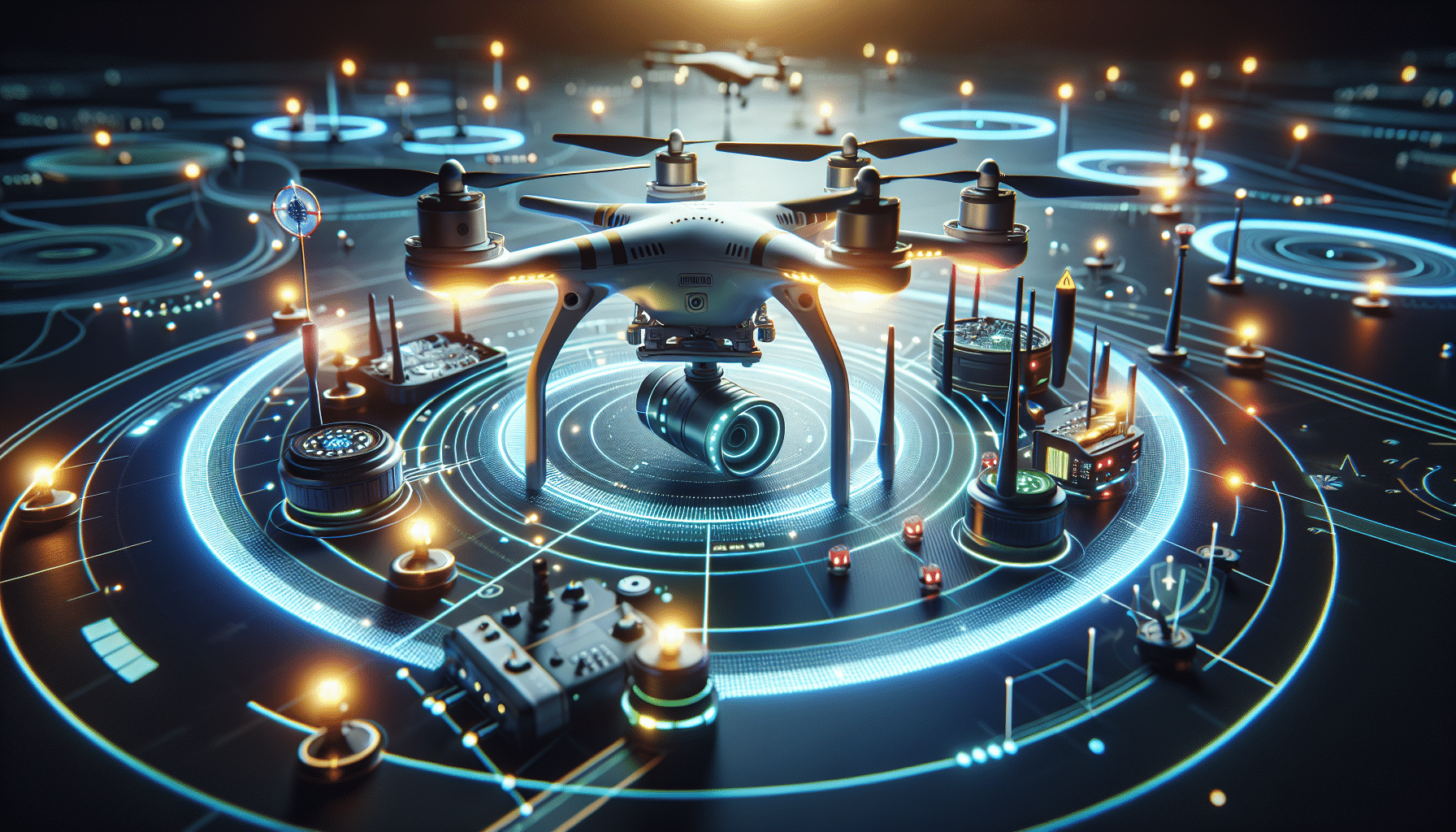Types of Drone Sensors
The landscape of drone sensors is diverse and continually evolving. Each type serves a specific purpose, and understanding these variations can vastly improve the user experience. At the primary level, drone sensors can be classified into several categories based on their function: positioning, imaging, environmental, and collision avoidance systems. Together, they create a robust framework allowing a drone to fly autonomously, capture stunning images, and avoid obstacles efficiently.
Positional Sensors
Positional sensors, often considered the backbone of drone navigation, primarily include Global Positioning System (GPS) units and inertial measurement units (IMUs). GPS sensors provide crucial geographical coordinates that help the drone maintain its intended path during flight. Meanwhile, IMUs complement GPS by offering data related to rotation and acceleration. This combination allows the drone to achieve stable flight, especially during challenging weather conditions. Furthermore, advanced drones also incorporate barometers to measure altitude more accurately.
Imaging Sensors
Imaging sensors are essential for capturing visual data. Drones equipped with high-resolution cameras are increasingly popular in various sectors such as agriculture, real estate, and surveillance. These cameras often come with additional functionalities like optical zoom and thermal imaging capabilities. Optical sensors capture high-definition images and videos, while thermal sensors detect heat signatures, making them invaluable for search and rescue operations. When combined with sophisticated imaging software, these sensors can produce 3D maps and models—a feature lauded in urban planning and environmental monitoring.
Environmental Sensors
Environmental sensors gauge various atmospheric conditions, such as temperature, humidity, and air quality. These sensors are particularly useful in agriculture, where they monitor crop health and help farmers make data-driven decisions. Some drones are now equipped with multi-spectral sensors that provide insights into plant health, identifying issues invisible to the naked eye. A study revealed that drones equipped with these sensors could increase crop yield by up to 20%. The integration of environmental sensors opens new avenues for drone applications, showcasing their versatility in various industries.
Collision Avoidance Systems
Collision avoidance systems are critical for ensuring the safety and reliability of drone operations. These systems use a combination of ultrasonic sensors, radar, and cameras to create a safe flight environment. By detecting obstacles in real-time, these sensors help the drone adjust its flight path to prevent accidents. This capability is especially important in urban areas or during GPS signal loss. Advanced systems can even allow drones to perform complex maneuvers, such as flying through tight spaces or navigating around moving obstacles—a real game changer for drone technology.

How Drone Sensors Work Together
Understanding how these various drone sensors work in tandem is crucial for harnessing the full potential of a UAV. While each sensor has its individual functions, their collaborative operation significantly enhances the drone’s capabilities. For example, the GPS unit provides location data while the IMU stabilizes the flight. If the drone encounters an obstacle, the collision avoidance system can override other commands and adjust the flight trajectory accordingly. Furthermore, this integration ensures that the drone can be operated remotely with high levels of precision, allowing for tasks such as aerial inspections and surveying with minimal human intervention.
Real-World Applications
The applications of drone sensors are nearly limitless, impacting various sectors from agriculture to military operations. In agriculture, for instance, drones equipped with imaging and environmental sensors are reshaping how farmers monitor crops. Aerial imaging can identify areas of a field that require watering, enabling more efficient resource management. In military contexts, drone sensors provide invaluable intelligence. Unmanned aircraft can conduct surveillance missions with precision, using advanced cameras and sensors to gather information without risking human lives. The military continuously explores drone capabilities to enhance operational effectiveness, leading to innovations that could redefine modern warfare strategies.
Potential Challenges
Despite the immense potential of drone sensors, challenges persist. Factors such as sensor accuracy, battery life, and regulatory issues can constrain their efficiency. For instance, inaccurate GPS signals can lead to navigational errors, compromising the safety and efficacy of operations. Additionally, many users demand longer battery life, primarily because higher-quality sensors tend to consume more power. Manufacturers continuously work on developing lightweight yet powerful sensors to overcome these hurdles. Regulatory frameworks are also catching up with technological advancements, necessitating that operators understand the rules governing drone flights in their regions.
The Future of Drone Sensors
The future of drone sensors is poised for remarkable advances, enhancing their role across multiple industries. Researchers and engineers are focusing on miniaturisation and incorporating AI capabilities into these sensors, paving the way for adaptive flying experiences. For instance, integrating machine learning can help drones learn from their environments, improving decision-making processes and operational efficiency. Moreover, innovations in sensor technology will likely allow drones to operate in increasingly complex environments while maintaining safety and reliability. We may soon see fully autonomous drones that can complete tasks with minimal human oversight, fundamentally transforming various sectors.
Conclusion
Dive deep into the world of drone sensors, and it becomes apparent how integral they are to the functionality and success of unmanned aerial vehicles. From positional sensors that navigate flight paths to imaging sensors that capture breathtaking landscapes, every sensor plays its part in crafting a comprehensive aerial experience. As technology continues to advance, the potential applications for drone sensors will undoubtedly expand, offering unprecedented opportunities across numerous sectors. For anyone interested in enhancing their understanding of drone technology, it is crucial to grasp the essence of these sensors. Discover more about our drone technology and how it can enhance your experience!
Discover more about our drone technology and how it can enhance your experience!
Frequently Asked Questions
What are the different types of sensors used in drones?
- Drone sensors can include GPS, LIDAR, image sensors, and ultrasonic sensors, each serving different functions like navigation, obstacle detection, and data collection.

